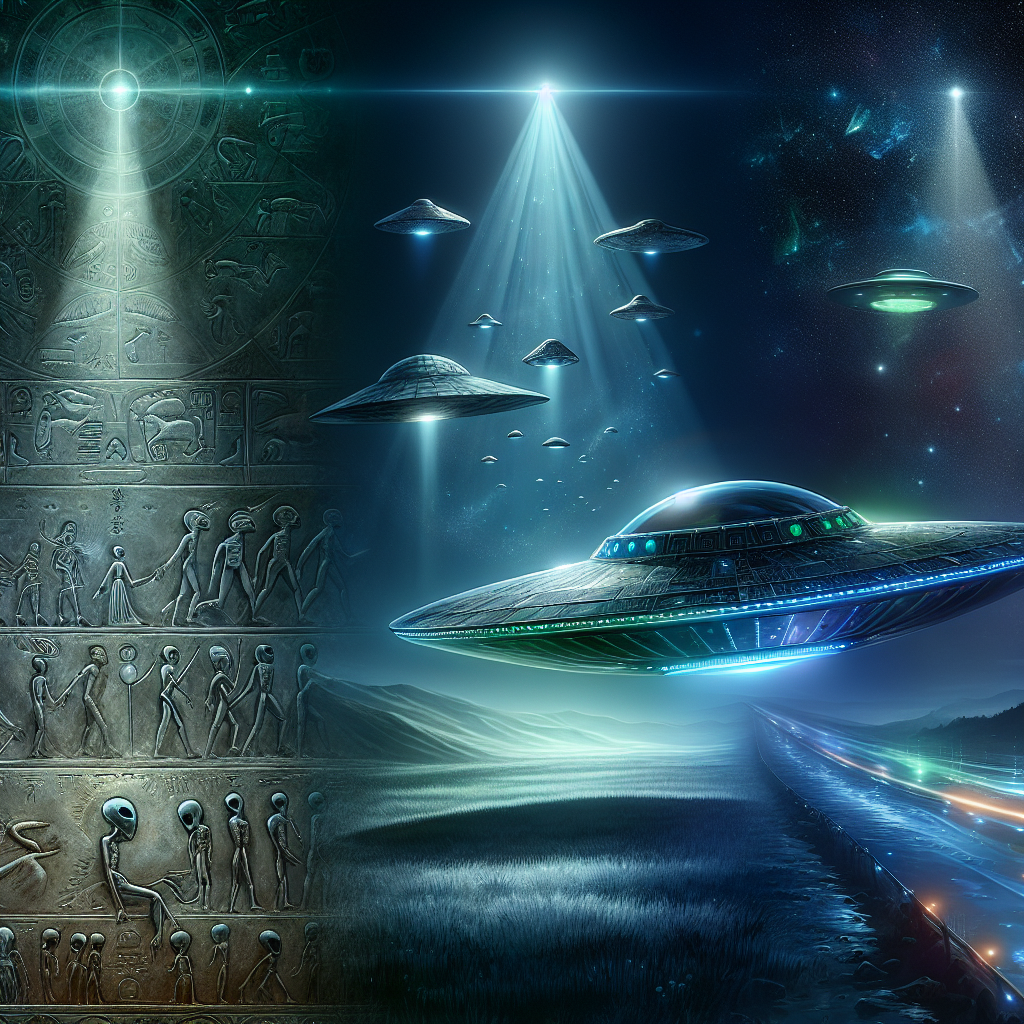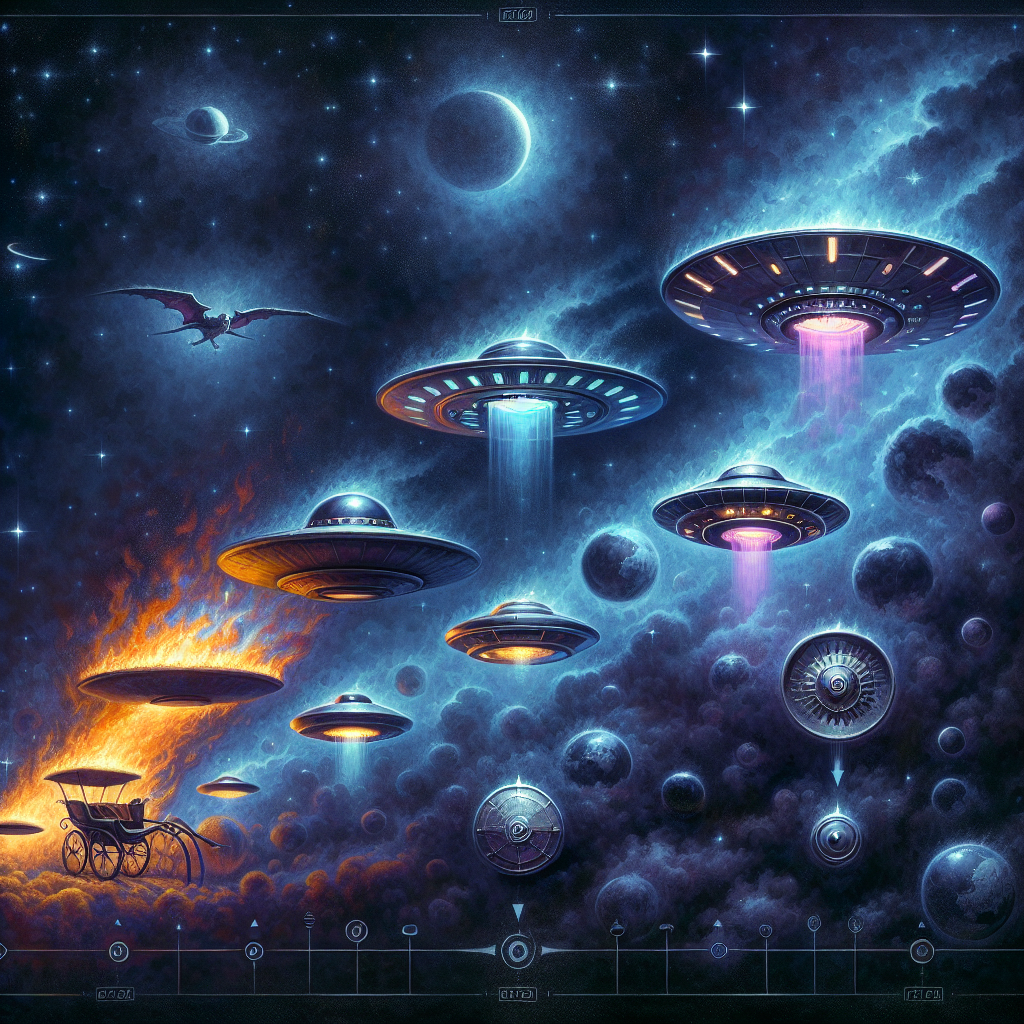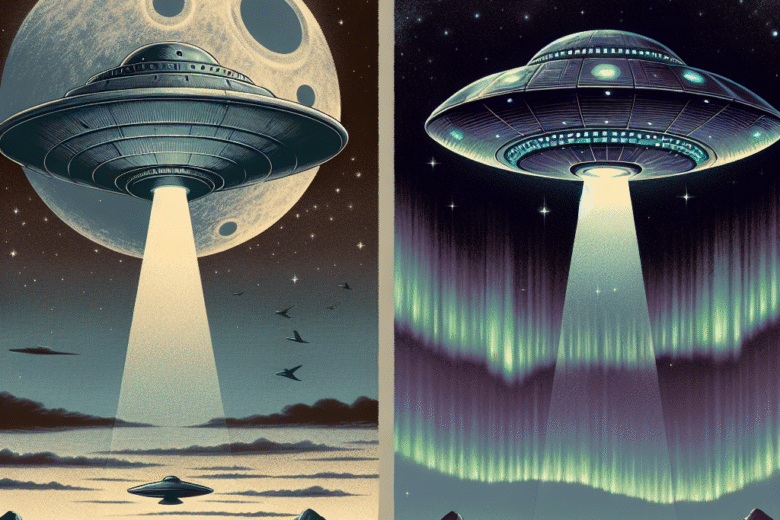Flying Saucer Reports: Historical Accounts vs. Modern Interpretations
For centuries, the concept of flying saucers has fascinated humanity, sparking curiosity and debate. From ancient texts to modern sightings, these mysterious objects have captured our imaginations and fueled countless theories. But how have our interpretations evolved over time? In this exploration, we delve into historical accounts and compare them with contemporary perspectives. Buckle up, as we embark on a journey through time and space!
Table of Contents
1. Introduction to Flying Saucers
2. Historical Accounts of Flying Saucers
3. Modern Interpretations and Technological Influence
4. The Role of Media in Shaping Perceptions
5. Scientific Investigations and Evidence
6. Conclusion
7. FAQs

Introduction to Flying Saucers
Flying saucers, often synonymous with UFOs (Unidentified Flying Objects), have been reported throughout history. These enigmatic aerial phenomena have been described differently across cultures, evolving from mythical chariots to the sleek, metallic discs commonly depicted today. But what causes these interpretations to shift? Let’s start by exploring some intriguing historical accounts.

Historical Accounts of Flying Saucers
Long before the term “flying saucer” was coined, ancient civilizations documented encounters with mysterious objects in the sky. The ancient Indian texts, such as the Vedas, speak of vimanas, flying chariots piloted by gods. Similarly, in ancient Rome, the historian Livy recorded sightings of “phantom ships” in the sky.
Fast forward to the Middle Ages, when scholars like Agobard of Lyon dismissed reports of “cloud ships” as superstitions. However, paintings from the Renaissance period depict strange aerial phenomena, suggesting that flying saucers were still a part of human consciousness.
Modern Interpretations and Technological Influence
The modern era of flying saucers began in 1947, when pilot Kenneth Arnold reported seeing nine crescent-shaped objects near Mount Rainier, Washington. This incident popularized the term “flying saucer” and sparked a surge of UFO sightings worldwide. The Cold War era, with its technological advancements and space race, further fueled interest and speculation.
Today, with the advent of drones and advanced military aircraft, modern interpretations often lean towards technological explanations. However, many enthusiasts and researchers still believe in extraterrestrial origins, citing famous cases like the Roswell incident as evidence.
The Role of Media in Shaping Perceptions
The media has played a pivotal role in shaping public perceptions of flying saucers. Movies, TV shows, and books have depicted UFOs in various lights—sometimes as benevolent visitors and other times as ominous invaders. Iconic films like “Close Encounters of the Third Kind” and “The X-Files” series have cemented the image of flying saucers in popular culture.
News coverage also influences perceptions. Sensational headlines and reports can sway public opinion, often blurring the line between fact and fiction. Social media platforms have further accelerated the spread of UFO-related content, making it challenging to discern credible information.
Scientific Investigations and Evidence
Despite the abundance of reports, scientific evidence for flying saucers remains elusive. Numerous government projects, such as Project Blue Book, have investigated UFO sightings, yet most cases remain unexplained. In recent years, the Pentagon’s release of declassified UFO footage has reignited scientific interest, prompting calls for more rigorous investigations.
Scientists emphasize the need for skepticism and critical thinking, urging enthusiasts to consider natural and man-made explanations before jumping to conclusions. While the possibility of extraterrestrial life cannot be dismissed, the lack of concrete evidence necessitates cautious exploration.
Conclusion
From ancient legends to modern sightings, flying saucers have captivated our imaginations for centuries. Historical accounts and modern interpretations highlight our evolving understanding of these mysterious phenomena. While technological advancements and media influence shape our perceptions, the quest for evidence and truth continues.
As we ponder the mysteries of the universe, one thing remains certain: flying saucers will continue to inspire wonder and curiosity, inviting us to explore the unknown and question the boundaries of our knowledge.
FAQs
Q1: What was the first recorded flying saucer sighting?
A1: The first modern recorded sighting was by pilot Kenneth Arnold in 1947, but ancient texts and historical records suggest that similar phenomena have been observed for centuries.
Q2: Are flying saucers always considered to be extraterrestrial?
A2: Not necessarily. While many believe in extraterrestrial origins, others propose natural or man-made explanations, such as atmospheric phenomena or advanced military technology.
Q3: How has technology influenced modern interpretations of flying saucers?
A3: Technological advancements, such as drones and military aircraft, have provided alternative explanations for sightings. However, they have also fueled speculation about advanced extraterrestrial technology.
Q4: What role does the media play in UFO perceptions?
A4: The media significantly influences public perceptions by popularizing certain narratives through movies, TV shows, and news coverage, often blurring the line between reality and fiction.
Q5: Is there scientific evidence supporting the existence of flying saucers?
A5: While many reports remain unexplained, definitive scientific evidence for extraterrestrial flying saucers is lacking. Ongoing investigations aim to provide more clarity.
Looking for a side hustle
Check out one of the best around atm
